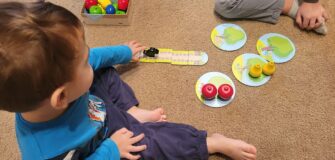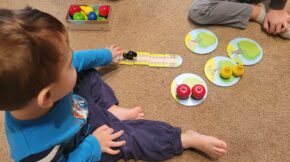Discover the Top High-Calorie Foods for Effective Weight Gain
Share
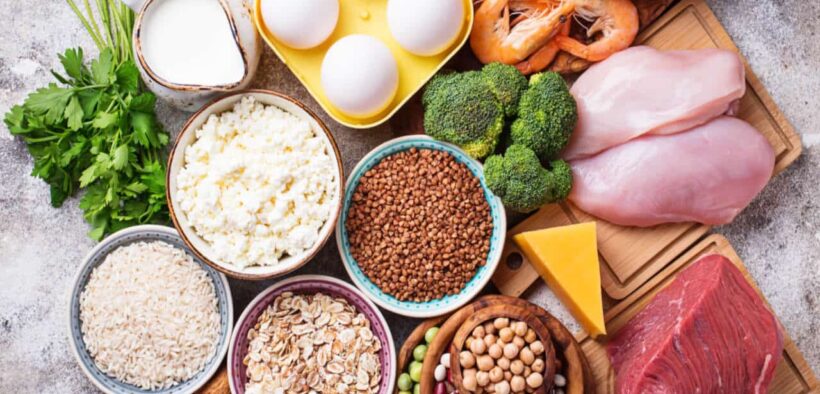
Infants and children struggle with gaining weight for different reasons. Some problems include trouble breastfeeding, not liking certain textures, or not getting enough food.
Stress, drinking too much milk or juice, and even allergies or certain medicines can also play a role. Sometimes, these issues go away independently with help from parents, dietitians, or doctors. But if a child’s weight isn’t going up as it should, they might need special help. For toddlers who are underweight, we have compiled a list of foods that can help them gain weight the right way, the healthy way.
These options are calories rich, packed with essential nutrients, and can enhance the overall appeal of their meals.
1. Dairy

These dairy options are rich in calories and can be included in your child’s diet to support healthy weight gain:
- Butter: 102 calories per tablespoon
- Cheese, full fat: a slice can have around 100-120 calories.
- Cream cheese, full fat: 1 tablespoon contains approximately
- Heavy cream: 1 tablespoon has around 52 calories
- Goat Cheese: An ounce can have about 75-100 calories
- Full-fat cottage cheese: Half a cup can provide around 220-240 calories
Tips for Adding Dairy to Kids’ Diets
Meeting daily dairy recommendations set by the USDA is essential for growing kids. For 2-3-year-olds, it’s 2 cups, 4-8-year-olds need 2 ½ cups, and 9-18-year-olds need 3 cups of dairy. Here are creative ways to ensure your child gets enough dairy:
- Cheese sticks: Add cheese sticks to their lunch
- Yogurt Bites: Freeze yogurt and fruit for delightful yogurt bites, a healthier popsicle alternative.
- Yogurt Parfaits: Make morning yogurt parfaits with layers of fruit, yogurt, and granola.
- Cottage Cheese Snacks: Pair cottage cheese with whole-grain crackers.
Dairy products further offer vital nutrients such as protein, calcium, and Vitamin D. Also, introducing dairy products at an early age tends to reduce the risk of developing food allergies in kids, as per a study by the American Academy Of Pediatrics(AAP), 2013.
2. Fruits

Certain fresh fruits, like bananas, avocados, coconut, and mangoes, can help gain weight in kids with their higher carbohydrate and fat content.
- Bananas: A medium-sized banana contains about 105 calories, along with carbs, fiber, and essential nutrients. They can be eaten independently or added to meals like oatmeal and smoothies.
- Avocados: Half an avocado offers around 161 calories and healthy fats. They’re versatile and can be added to various dishes, such as salads, or enjoyed alongside proteins like eggs.
- Coconut: Coconut meat is calorie-dense, with a 1-ounce serving providing 99 calories and healthy fats. Use shredded coconut to boost the calorie content of fruit salad, stir-fries, or soups.
- Mango: One cup of mango contains approximately 99 calories and is carbohydrate-rich. Enjoy mango alone, or add it to smoothies, salsas, or salads.
3. Dried Fruits
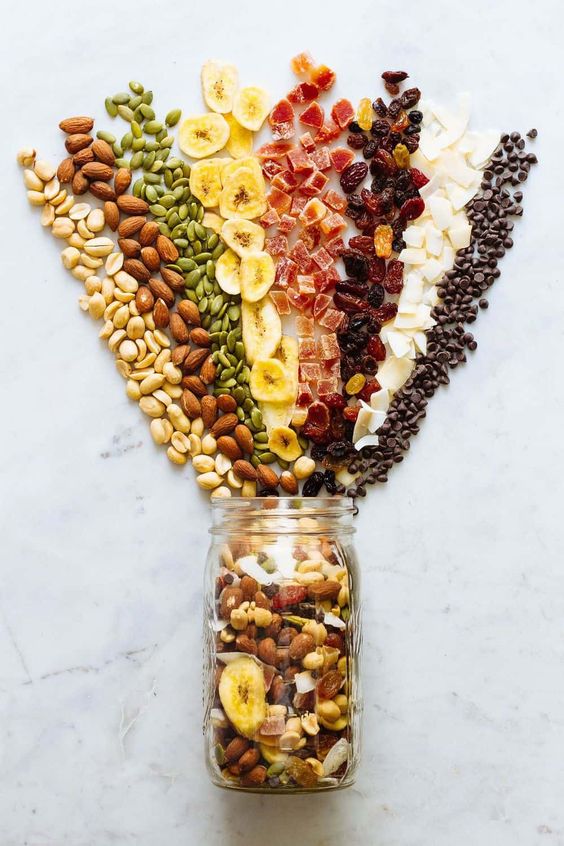
Dried fruits are energy-dense sacks. Despite their small size, they offer similar nutrients to fresh fruits and have a longer shelf life. Dried fruits can benefit weight gain, but they are also high in natural sugars. To balance this, it’s best to pair them with healthy fats or proteins to manage blood sugar levels.
- Dates: A date has 66.5 calories, fiber, and nutrients. Your kid can enjoy them plain or stuffed with almond butter and coconut.
- Prunes: With 67 calories per ounce, prunes boost digestion and can be snacked on or added to salads and smoothies.
- Raisins: Offering 85 calories per ounce, raisins are nutrient-rich and fit well in snacks, yogurts, and salads.
- Sultanas: With 91 calories per ounce, sultanas resemble raisins and can be combined with nuts, yogurts, or salads.
- Currants: At 79 calories per ounce, currants enhance yogurts, stuffings, and baked dishes.
- Banana Chips: These provide 147 calories per ounce and are easy to include in snacks or as a topping.
- Dried Pineapple: An ounce of dried pineapple contains 80 calories
- Dried Apple Rings: With 104 calories per ounce, dried apple rings make for a tasty snack.
4. Meat and Poultry Items
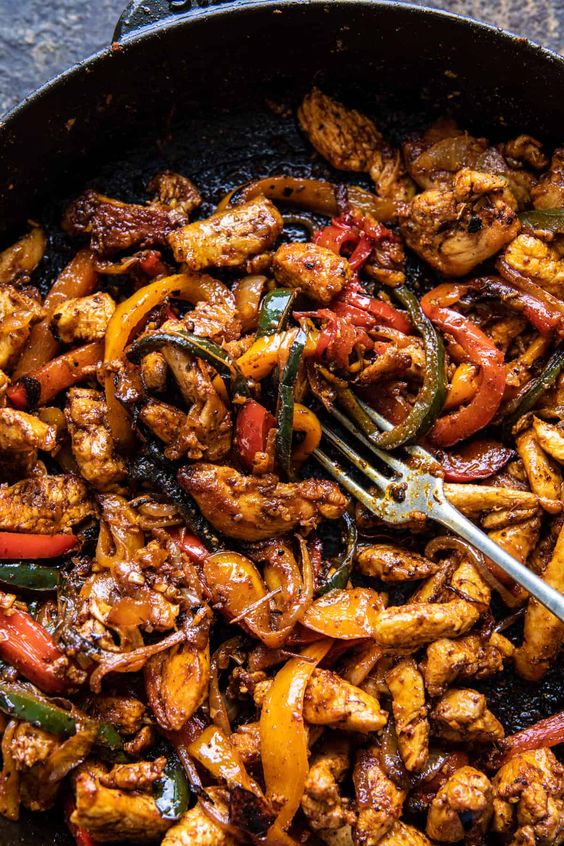
Adding meat and poultry early in your child’s diet is a good idea for overall health. Chicken, dark meat, beef, and eggs are packed with growth nutrients. You can prepare them in different ways to make sure your child leaves their plate clean.
Chicken: Chicken is a versatile and nutritious choice for kids’ meals. Cooked, skinless, and boneless chicken breast (100gm) has about 165 calories, 31gm proteins, and 3.6gm fat.
Here are Some Kid-Friendly Chicken Dishes
- Chicken Tenders: Baked or grilled for dipping
- Chicken Nuggets: A healthier homemade version
- Chicken Quesadillas: whole wheat tortillas with chicken and cheese
- Chicken Stir-Fry: With colorful veggies over brown rice
- Chicken Wraps: This slice of chicken with lettuce and veggies
- Chicken Noodle Soup: Small chicken pieces with noodles and vegetables
Turkey: Like chicken, cooked turkey(100gm) has around 145 calories, approximately 25 gm of protein, and roughly 4gm of fat. Kid Friendly Turkey Dishes include
- Turkey Meatballs: baked for tasty and protein-packed snacks
- Turkey Wraps: Rolled in whole wheat wraps with veggies
- Turkey Burgers: Grilled and served on whole grain buns
- Turkey Stir-fry: Combined with Veggies
Lamb: Lamb can add much-needed taste and deliciousness to any meal while offering a generous dose of nutrients. It has a unique flavor and provides various nutrients. 100gm of lamb consists of 258 calories, about 25.6gm proteins and around 17gm of fat. Some kid-friendly lamb dishes include:
- Lamb Kebabs: Grilled with colorful veggies for a fun meal
- Lamb Sliders: Small burgers on whole grain buns
- Lamb stew: Tender pieces in a hearty stew with veggies.
Beef: Beef is rich in nutrients and taste. Cooked beef of 200 gm contains around 250 calories, approximately 35 protein, and route 100 gm of fat. Some kid-friendly beef dishes include
- Beef Tacos: Lean ground beef in whole wheat tortillas with veggies.
- Beef and Veggie Skewers: Grilled for a tasty and colorful meal.
- Beef Stir-Fry: Sliced beef with veggies and a light sauce.
Eggs: Eggs are a protein powerhouse. One large egg has about 72 calories, approximately 6gm of protein, and roughly 5gm of fat. Good variants of kid-friendly egg dishes include
- Scrambled eggs: A classic breakfast choice
- Egg Muffins: Baked with veggies and cheese
- Egg Salad: Mashed with mayo for sandwiches or wraps
Other Growth-Boosting, Calorie-Rich Foods for Kids Include
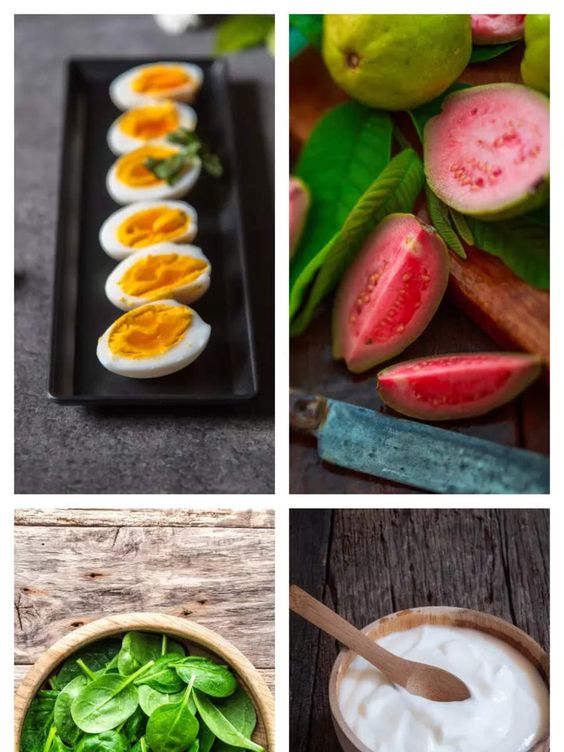
Several foods can support kids’ growth with their calorie-rich and nutrient-packed profiles. Here are some options
- Mayonnaise: Adds flavor to sandwiches and wraps and is popular among kids for a good reason. 1 tablespoon of mayo has about 94 calories
- Honey: A natural sweetener and can be used as an alternative to sugar for sweetness. You can drizzle it on salads, yogurt, oatmeal, and toast to make it more tasty for them
- Beans: High in protein and fiber, beans can be added to soups, salads, or wraps. (Around 120 calories per half cup)
- Peanut Butter: Rich in healthy fats and protein, great on toast or as a dip. (Around 94 calories per tablespoon)
- Peas: Offer protein and fiber; mix them into pasta or rice dishes. (Around 62 calories per half cup)
- Sweet Potato: Nutrient-dense and versatile; baked or mashed. (Around 112 calories per medium sweet potato)
- Walnuts: A source of healthy fats; sprinkle on yogurt or salads. (Around 185 calories per ounce)
- Cashew: Rich in protein and good fats; enjoy as a snack or in stir-fries. (Around 155 calories per ounce)
- Protein Bars: Convenient snacks with added nutrients. (Calories vary, typically around 150-250 calories per bar)
- Quinoa: High in protein; used as a base for salads or sides. (Around 222 calories per cooked cup)
- Chia Seeds: Provide omega-3s and fiber; mix into yogurt or smoothies. (Around 58 calories per tablespoon)
- Flax Seeds: Rich in fiber and omega-3s; add to oatmeal or baked goods. (Around 55 calories per tablespoon)
- Whole Grain Bread and Pasta: Offer complex carbs for sustained energy (Calories vary, typically around 80-100 calories per bread slice or half a cup of boiled pasta)
- Dark Chocolate: A treat with anti-oxidants, enjoyed in moderation. (Calories vary based on percentage, typically around 50-60 calories per small piece.)
- Granola: A crunchy option to top yogurt or have as a snack( Calories vary typically around 100-150 calories per quarter cup)
- Tofu: A source of plant-based protein used in stir-fried or smoothies. ( Around 94 calories per 3.5oz/ 100gm)
- Oats: fiber-rich and versatile, enjoyed as oatmeal or in baking. Around 150 calories per half cup of dry oats)
Other Foods that Support Healthy Growth in Underweight Children
Apart from Calorie-rich foods, pediatricians also recommend foods that have an abundant content of healthy fatty acids for healthy growth in children. Here are some recommendations:
1. Oils
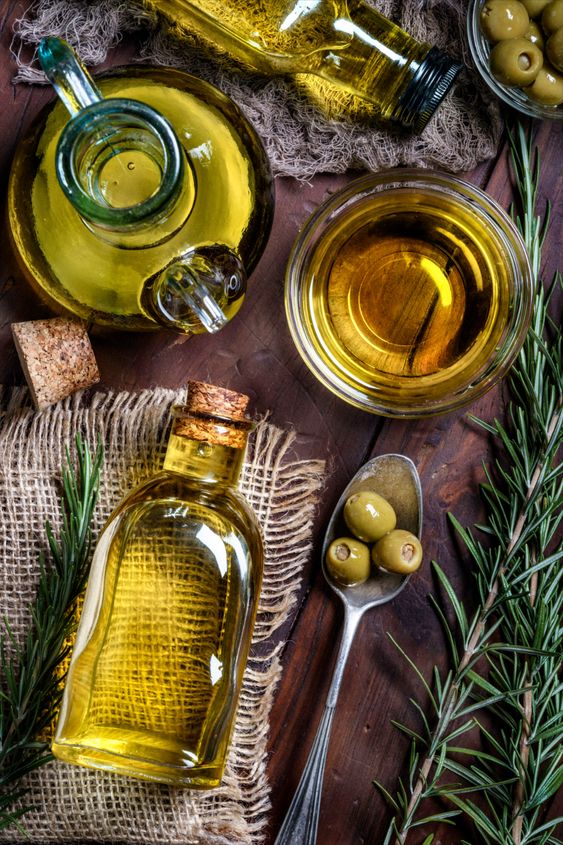
Preparing your kid’s lunch or dinner using these fatty oils will support their health growth:
- Flax Oil: A source of omega-3 fatty acids. You can use it for sauteing veggies or as a salad dressing base.
- Avocado Oil: Rich in monounsaturated fats. You can use it for sauteing veggies or as a salad dressing base.
- Olive Oil: Packed with healthy fats. You can drizzle it on whole-grain bread or use it to enhance pasta dishes
2. Fatty Fish
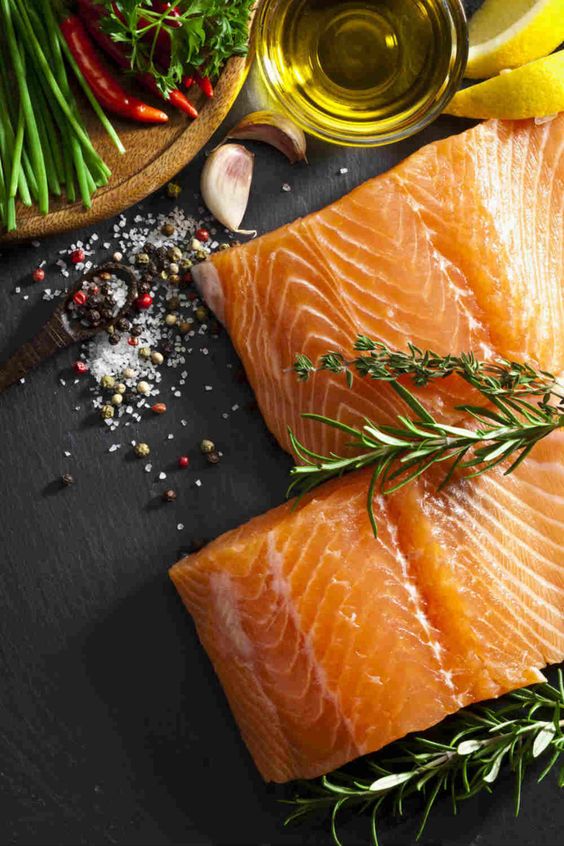
Fatty fish are packed with essential nutrients that support kids’ health. Including these fatty fish in kids’ diets can provide a range of nutrients that promote their growth.
- Salmon: A 100 gm serving of cooked salmon provides around 206 calories, 25 gm protein, and roughly 13 gm of healthy fats. It is rich in omega-3 fatty acids.
- Mackerel: Cooked Mackerel of 100 gm offers about 305 calories, around 18 gm of protein, and roughly 25 gm of healthy fats. It is a source of vitamin D and omega-3s.
- Tune: A 100 gm serving of canned light tuna has about 109 calories, approximately 25 gm of protein, and roughly 0.5 gm of fat. It’s high in protein and a good source of selenium.
- Herring: Cooked herring(100gm) contains around 262 calories, about 18gm of protein, and rough 18gm of healthy fats. It is rich in omega-3 fatty acids and vitamin D.
- Sardines: A 100 gm serving of canned serving provides approximately 208 calories, around 25 gm of protein, and roughly 11 grams of healthy fat. They are a great source of calcium, Omega 3, and Vitamin D full stop.
Why is it Important to Manage the Child’s Weight?
Insufficient weight gain can indicate medical problems. A child is categorized as underweight if they are BMI falls below the fifth percentile. Additionally, indicators include visible ribs or failure to outgrow clothes seasonally.
If a child is consistently underweight as they grow up, it could mean they naturally belong to the smaller size of the growth chart.
Keeping an eye on their weight using CDC growth charts can help see if they stay in the same range. But if the weight suddenly drops a lot or changes quickly, it might be because of a medical problem.
This could be related to poor nutrient absorption or digestive problems. Medical reasons could include problems like thyroid issues, hormones, eating problems, or allergies.
If you have questions about your child, it’s always recommended to take a board-certified pediatrician on board. You can also consult a nutritionist to help you address your child’s underweight needs.
Conclusion
Introducing new foods to children often requires patience, and multiple attempts to fully stop this process involve gradually familiarising them with the food, starting it with folk-smelling it, and finally trying a tiny taste.
When including new items, favorite food makes up most of the meal. This way, they can explore new food without relying on it for energy.
Engaging your children in the kitchen can pique their interest in certain foods. Also, involving them in meal planning by asking about their preference can boost their food choices.
By making the experience interactive, you can encourage them to try new things and eat various foods.
Frequently Asked Questions
What Additional Tips Can Parents Take to Help Their Underweight Children Gain Weight?
Besides their child’s nutritional intake, they have other options to help their underweight kids. For children labeled as ‘failure to thrive, parents can go for oral supplements such as prescribed specialized formulas for weight gain. Another option is to divide their mail into 3 portions for the day. Parents can also add healthy snacks ( not replacing meals), but it is important to adjust their portion sizes.
How to Gain Weight Fast for Kids?
To gain weight fast for kids, try to use slightly bigger portions with healthy calorie-dense meals. Use carbohydrates such as rice, bread, pasta, and potatoes in the meals too. Ensure your calories are high but also nutritionally rich. This enables the child to gain weight faster but healthily.









